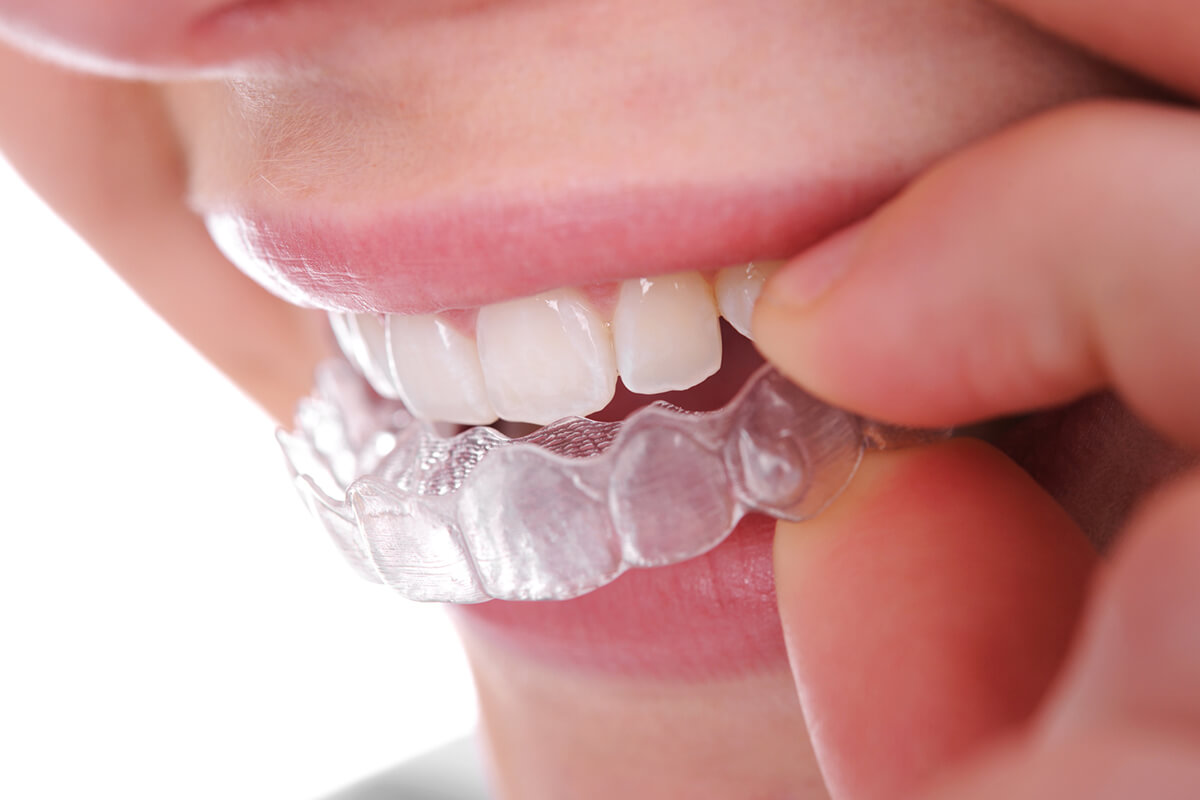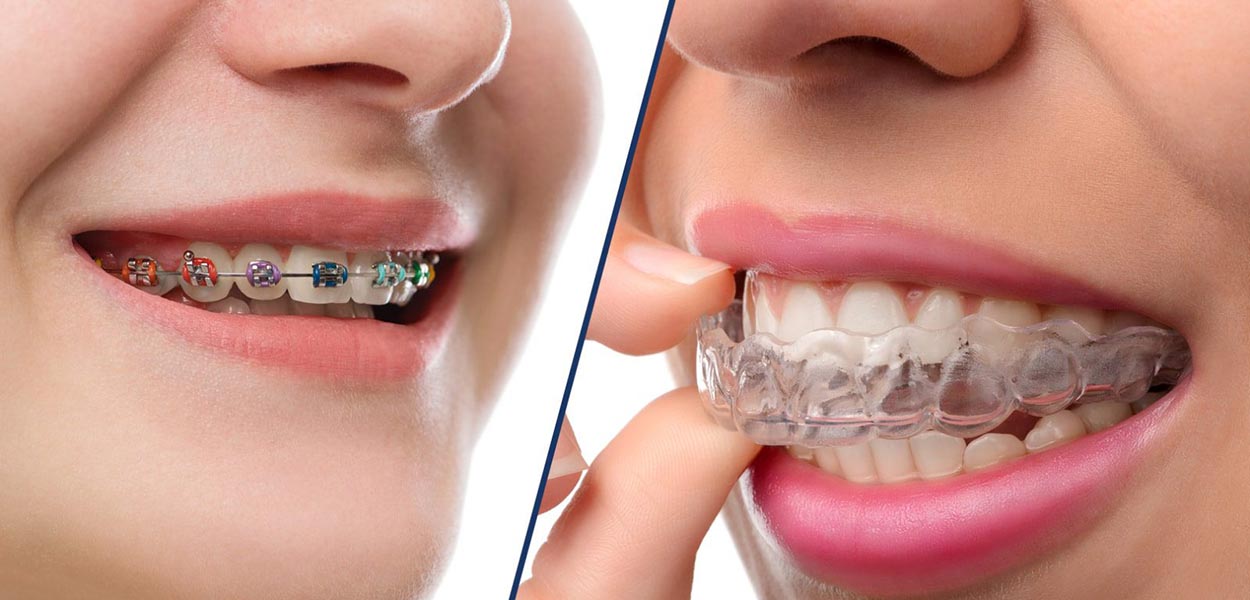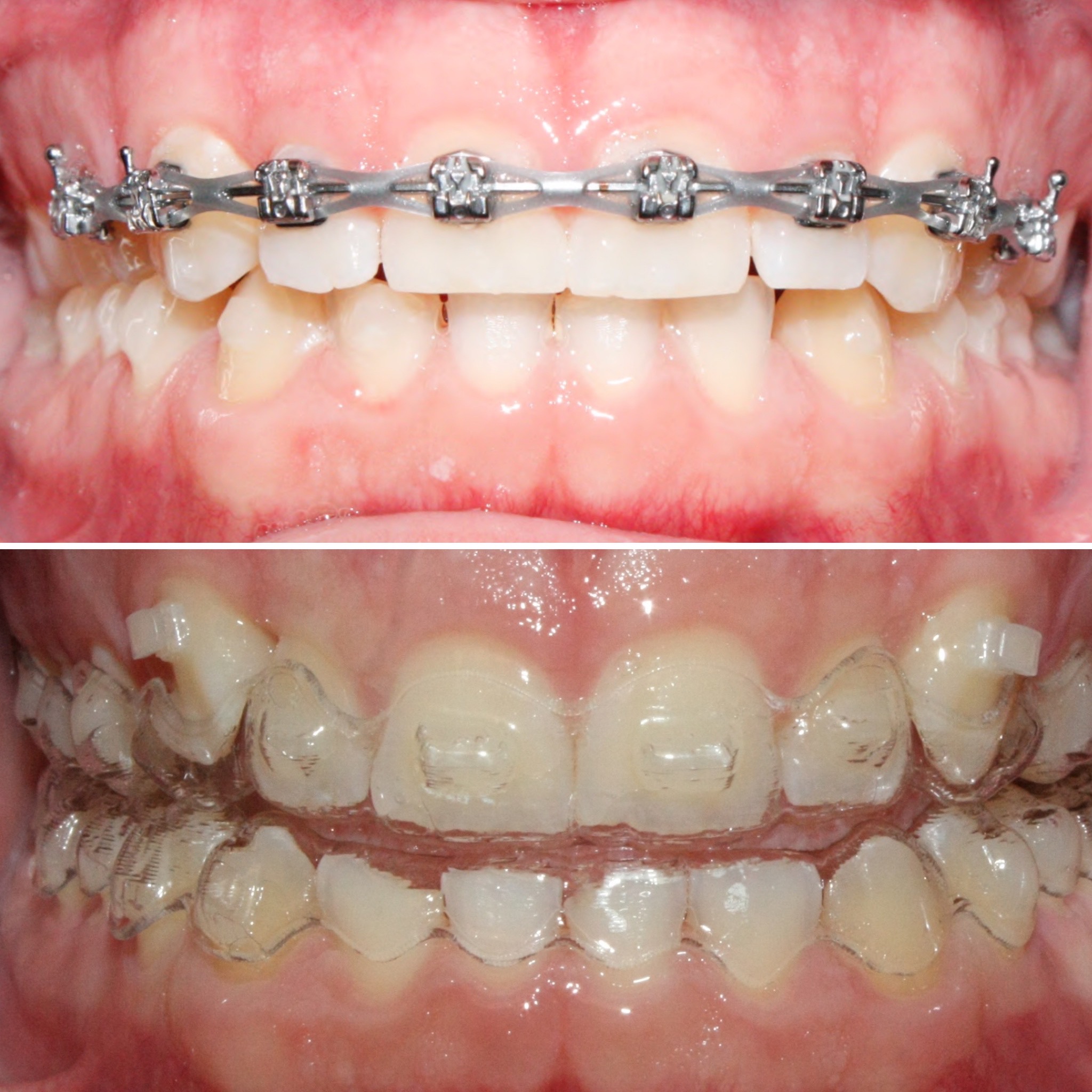Discover the Perks of Invisalign for a Perfect Smile Improvement
Discover the Perks of Invisalign for a Perfect Smile Improvement
Blog Article
Invisalign vs. Typical Dental braces: Which Option Is Right for You?
When taking into consideration orthodontic therapy, the option in between Invisalign and conventional braces presents numerous crucial aspects that warrant cautious analysis. Invisalign uses a discreet alternative with removable aligners, while typical dental braces provide a more noticeable yet efficient option for severe misalignment.
Review of Treatment Options

On the other hand, conventional dental braces contain metal braces and cords that are adhered to the teeth. This technique uses continuous pressure gradually to achieve positioning. While effective for complicated orthodontic concerns, traditional braces require normal check outs for changes and can pose difficulties in preserving dental hygiene because of the problem of cleansing about brackets and wires.
Both options have their merits, and the choice usually rests on specific dental conditions, lifestyle preferences, and individual conformity. Inevitably, getting in touch with an orthodontic professional is important for establishing one of the most ideal therapy strategy customized to private needs. Recognizing the subtleties of each alternative can significantly influence the overall success of orthodontic therapy.
Aesthetic Factors To Consider
A significant factor influencing the choice in between Invisalign and conventional dental braces is the aesthetic charm each therapy supplies. Invisalign aligners are crafted from clear plastic, making them practically unnoticeable when worn. This discreet look is especially attracting adults and teens that might feel uncomfortable about their orthodontic therapy. The capability to maintain an all-natural smile throughout the placement process can substantially improve the patient's confidence in specialist and social setups.
In contrast, standard braces are composed of steel brackets and cords, which can be a lot more visible. While developments in orthodontic modern technology have actually led to the growth of smaller brackets and colored elastics, typical braces still keep a more obvious profile. For some people, the exposure of braces might discourage them from looking for required therapy.
Ultimately, the option in between Invisalign and standard dental braces may depend upon individual preferences pertaining to aesthetic appeals. Patients who prioritize discernment often favor Invisalign, while those who are less concerned concerning presence may choose for traditional dental braces. Recognizing the aesthetic implications of each choice is essential for making a notified decision that straightens with one's way of living and preferences.
Comfort and Convenience

In terms of ease, Invisalign aligners are detachable, making it possible for individuals to enjoy their preferred foods without limitation and maintain optimum dental hygiene. Cleaning and flossing are streamlined, as the aligners can be gotten throughout these regimens, whereas typical dental braces require mindful navigating around cables and brackets.
Furthermore, Invisalign's progressive system permits for fewer orthodontic check outs. Patients usually get multiple sets of aligners at as soon as, which can enhance the treatment procedure and reduce time invested in the orthodontist's chair. In contrast, standard dental braces require regular changes, making them less practical for those with busy routines. Invisalign. Overall, the convenience and comfort of Invisalign make it an attractive selection for numerous people looking for visit homepage orthodontic treatment.
Therapy Period and Efficiency
While both Invisalign and traditional dental braces work in fixing oral misalignments, the duration of treatment can differ substantially in between both choices. Typically, Invisalign treatment can take anywhere from 12 to 18 months, depending upon the intricacy of the instance. The clear aligners function by gradually changing teeth into their desired placements, and normal follow-ups with an orthodontist aid make certain progress stays why not look here on the right track.
On the other hand, typical dental braces frequently require a longer commitment, normally varying from 18 months to three years. This results from their set nature and making use of cords and braces, which can be more effective for complex cases and extreme imbalances (Invisalign). The therapy performance of typical dental braces is well-documented, as they permit exact modifications and greater control over tooth movement
Ultimately, the choice in between Invisalign and typical dental braces may depend upon both the expected treatment duration and the certain oral problems available. Consulting with an orthodontist is critical, as they can give customized suggestions based on private needs, ensuring the picked technique aligns with wanted durations and end results.
Price Comparison and Insurance Alternatives
Price plays a considerable role in the decision-making procedure for people thinking about orthodontic treatment, whether choosing Invisalign or standard braces. Typically, the cost of Invisalign arrays from $3,000 to $8,000, while standard dental braces generally set you back in between $2,000 and $6,000. Factors influencing these expenses include the intricacy of the instance, the period of treatment, and geographical location.
Insurance policy coverage can dramatically influence out-of-pocket costs. Many dental insurance strategies provide partial insurance coverage for orthodontic treatments, yet the specifics can vary commonly. It is important for patients to examine their insurance coverage to establish the extent of insurance coverage for either option. Generally, conventional dental braces may be much more regularly visit here covered by insurance plans contrasted to Invisalign, which some insurance providers classify as an aesthetic procedure.
Additionally, several orthodontic methods use adaptable settlement strategies, making both treatment options much more available. Clients need to ask regarding possible funding options and discount rates for ahead of time settlements. Assessing the complete cost, consisting of insurance policy advantages and layaway plan, is necessary for making an educated choice that lines up with both aesthetic choices and budget factors to consider.

Final Thought
In recap, the option between Invisalign and typical dental braces depends upon numerous aspects, including aesthetic preferences, convenience, therapy period, and expense. Invisalign uses a discreet, removable option that facilitates dental health and dietary flexibility, while typical braces may be more ideal for intricate dental issues and often come at a reduced rate factor. Ultimately, assessment with an orthodontist is essential to analyze private situations and determine one of the most suitable therapy option for attaining ideal dental placement.
When thinking about orthodontic treatment, the option between Invisalign and typical braces offers a number of essential factors that warrant careful analysis.Comparing Invisalign and typical braces exposes distinct therapy options for orthodontic improvement.While both Invisalign and standard dental braces are efficient in correcting dental imbalances, the period of treatment can differ dramatically between the 2 options.Expense plays a significant duty in the decision-making process for individuals taking into consideration orthodontic treatment, whether opting for Invisalign or conventional braces.In recap, the choice between Invisalign and traditional dental braces pivots on multiple aspects, consisting of aesthetic preferences, convenience, therapy duration, and expense.
Report this page